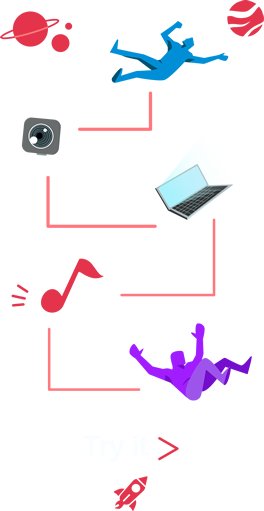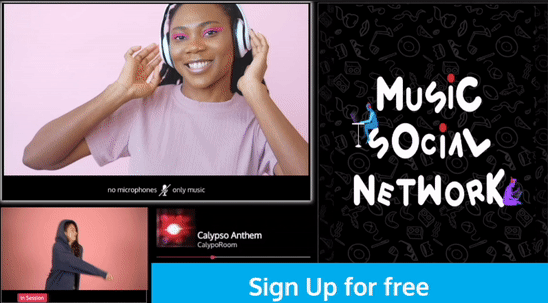History of music social networks

Table of content
History of music social networks - Introduction
Welcome, dear reader! Let's take a moment to appreciate the amazing ride we've all been on, the digital revolution. We've come a long way, haven't we?
This massive shift in technology hasn't just changed how we live; it's changed us, society, and how we connect.
This article is an invitation to embark on a fascinating journey, a journey where we'll explore the story of music social networks.
Now, imagine this. A world where music, that universal language we all love, meets the boundless connectivity of the internet.
In the following sections, we'll explore how these networks came into being, their evolution over time, and the enormous impact they've had on artists and fans alike.
Together, we'll delve into the rich tapestry of music social networks. From their humble beginnings to the sophisticated platforms we see today, this is an incredible story that showcases the power of music and the unifying force of the digital age.
Whether you're an avid music lover or a curious mind looking to learn more about digital transformation, there's something in this journey for everyone. Let's dive in, shall we?

KEY TAKEAWAYS
Music social networks have evolved alongside digital technology, transforming music sharing and consumption from pre-internet mixtapes to modern online communities.
Early pioneers like MySpace and Last.fm were revolutionary, facilitating music discovery and fostering vibrant communities of global music lovers.
These platforms democratized music, empowering artists, especially independent ones, to share their work and gain recognition.
Later entrants like SoundCloud, Bandcamp, and ReverbNation advanced the concept by integrating innovative features and technologies, enhancing the music experience further.
The integration of Artificial Intelligence in these platforms brought personalized recommendations, smart playlists, and automated music discovery.
The shift to streaming services like Spotify and Apple Music transformed the music ownership model, providing access to vast libraries instead of owning individual songs.
Live performances have also transitioned online, with platforms like Twitch and YouTube Live hosting virtual concerts, further diversifying our music experiences.
Early beginnings of music sharing and social networking
Remember the joy of receiving a mixtape from a friend? The carefully curated selection of songs, each carrying a message, a feeling, a shared moment?
Or maybe swapping CDs and discovering new genres, new bands, new worlds of music? That was the magic of music sharing in the good old days, before the internet arrived on the scene.
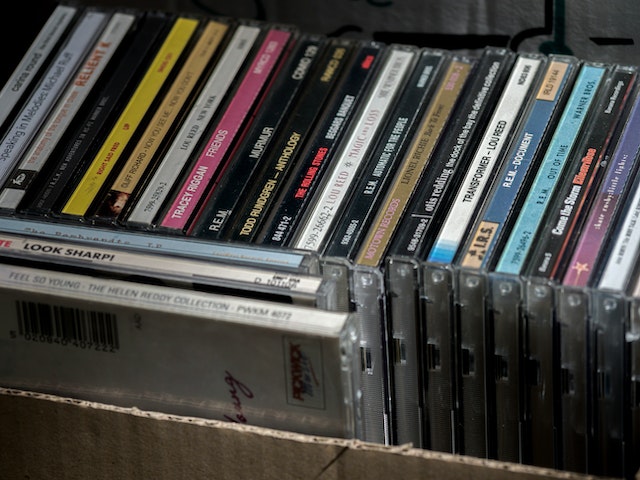
Then came the wave of digital technology, changing the music landscape and our lives forever.
Just like how it revolutionized communication, learning, and so much more, the internet played a crucial role in reshaping how we shared and consumed music.
Today, nearly 616.2 million people listen to their favorite artists or discover new ones via online streaming platforms.
Alongside this evolution, an innovative concept was born - social networking for music. It combined our love for social interaction and music, enabling us to not only listen to but also share and discuss our favorite tunes.

The genesis of music social networks
Let's take a journey back in time to when MySpace and Last.fm were the fresh new faces on the block, the pioneers leading the charge in the music social network scene.
MySpace was at its peak in 2006 and 2007, becoming the most visited website in the United States.
These platforms, though might appear simplistic in today's advanced digital age, were groundbreaking in their era, setting the stage for music sharing and discovery in an entirely new way.

They offered a host of unique features, enabling users to share, comment on, and discuss their favorite tracks. It was more than just listening to music; it was about being a part of a living, breathing community.
More importantly, these platforms were game-changers for the music industry. They presented artists, especially independents ones, with a revolutionary way to reach out to fans, share their music, and gain recognition.
Evolution and advancements in music social networks
Moving ahead in our timeline, we encounter a new wave of platforms, notably SoundCloud, Bandcamp, and ReverbNation.
These modern music social networks, building on the foundation laid by their predecessors, brought in innovative features and improvements, truly elevating our music experience.

With them listening to and discovering music became not just a hobby but an engaging, immersive, and fun-filled activity.
The advancements were not merely about adding new features, though. It was about using the technology of the era to make music sharing and discovery more intuitive and tailored.
A notable example is the incorporation of Artificial Intelligence (AI) in music social media, which ushered in an era of personalized recommendations, smart playlists, and automated music discovery.
As these platforms evolved, they also had to tackle the challenge of sustainability and profitability, leading to a variety of monetization models.
So, as we look at the journey of music social networks, it's fascinating to see this symbiotic relationship between technology progress and their evolution.
They grew together, shaped each other, and in the process, transformed our music experience forever.

Transition to streaming and live performances
Next on our journey through the evolution of music social networks, we find ourselves in the age of streaming.
The transition was marked by a shift from the music ownership model—think of downloading songs from platforms like iTunes—to the era of music streaming services like Spotify and Apple Music.
It is estimated that music streaming will make up 65% of the global music industry revenue by 2026, and 84% of US revenue.
Rather than owning a few songs or albums, we started 'renting' access to vast libraries of music. It was as if we had traded our small personal libraries for a key to a vast global musical kingdom.
But the innovation didn't stop at streaming recorded music. Oh no! The world of live music performances also found a home on the internet.
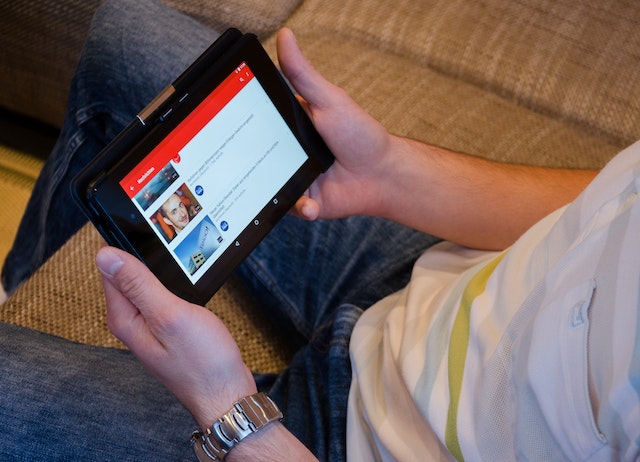
As a result, we began seeing our favorite artists perform live right from the comfort of our homes. This change has had a profound impact on live performance trends and continues to shape how we experience live music.
Indeed, music social networks have not only transformed how we listen to recorded music but also redefined our experience of live concerts.
It's a testament to the adaptability of these platforms and their continuous commitment to bringing music closer to us, no matter the circumstances.
Creating shared experiences: the emergence of CalypsoRoom
Just when we think we've seen it all in the world of music social networks, a new star emerges, and it's called CalypsoRoom.
But what is it that sets CalypsoRoom apart from the rest? Simply put, CalypsoRoom is the new stage in the evolution of music social networks.
Now, let's get more intimate with CalypsoRoom. Imagine a platform that not only lets you listen to the same song as your friend halfway across the world, but also allows you to see each other's reactions via webcam.
That's right, CalypsoRoom recreates the communal listening experience in a digital space, allowing for more meaningful connections between listeners, no matter the distance between them.
It's a testament to the power of music in community building and mental health.
By focusing on user engagement strategies, CalypsoRoom is changing how we interact with music and with each other, creating a social space that is both intimate and expansive.
So, let's embrace this new way of connecting through music. Who knows where it will take us next? Keep exploring, keep sharing, and above all, keep the music playing!
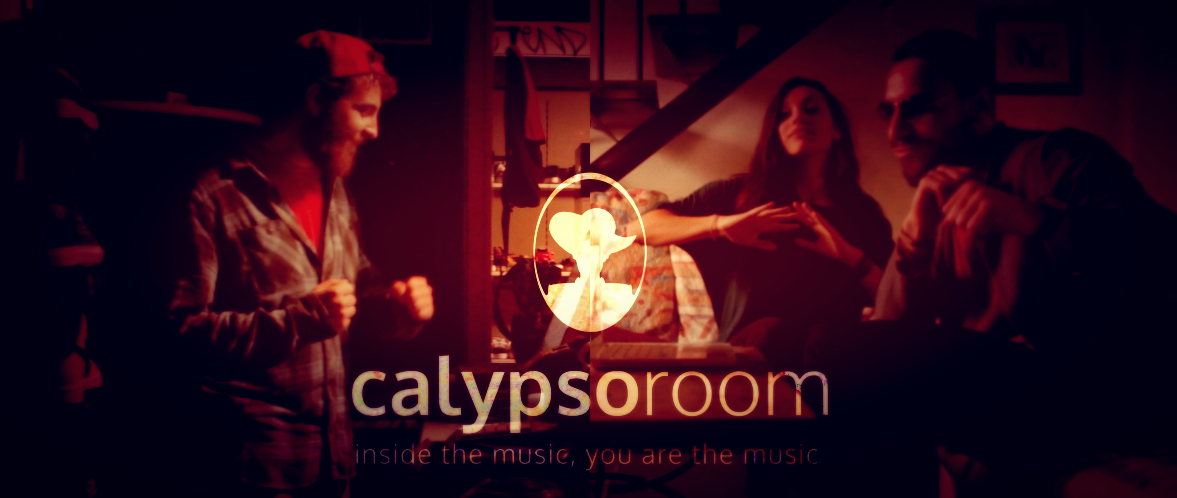
Prospects of music social networks
Peering into the horizon, we're about to embark on an exciting journey, where the fusion of technology and creativity promises to redefine music social networks.
The potential future of these platforms is full of intriguing possibilities and advancements that could forever change how we share, consume, and enjoy music.
Advanced technologies such as Virtual Reality (VR) and Augmented Reality (AR) hold the potential to elevate the way we experience music on social networks.
They might enable us to attend a virtual concert alongside friends from different corners of the globe, or immerse ourselves in interactive music videos, transcending traditional boundaries of engagement.
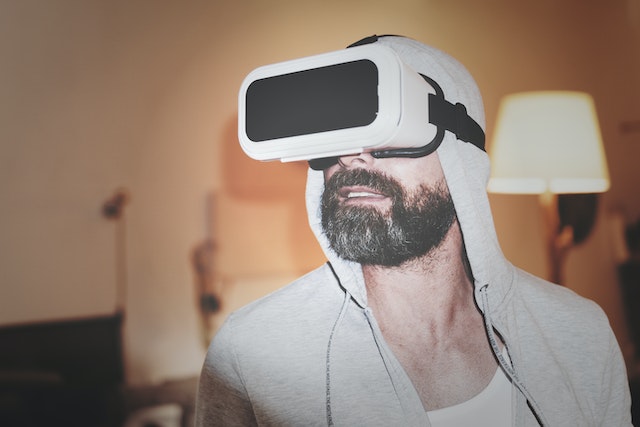
Meanwhile, Artificial Intelligence (AI) continues to emerge as a game-changer. As AI algorithms become more sophisticated, they could transform the way music is discovered, shared, and enjoyed on social platforms.
Learn more about the AI's algorithmic influence on music social networks to understand the depth of this ongoing transformation.
In the quest for improved transparency and fair remuneration for artists, blockchain technology presents intriguing possibilities too.
By leveraging blockchain, music social networks could potentially address intellectual property challenges, ensuring artists receive their rightful earnings.
Lastly, the future of music social networks might see a surge in niche music communities.
As we look ahead, it's evident that the prospects of music social networks are only limited by our imagination.
The coming years promise an array of advancements that will not only transform how we interact with music but also how we connect with one another through it.

History of music social networks - Conclusion
From the early days of MySpace and Last.fm, through the era of live streaming services, and now the dawn of CalypsoRoom, the tune of our musical interaction has constantly evolved.
But this doesn't end here. In fact, it's only the overture to an entrancing symphony that's yet to come.
Among the promising notes that herald this future is CalypsoRoom, a platform designed to blend music and connection in a way we've never seen before.
Now, picture this: you're in your room, headphones on, favorite song playing, and there are thousands of others around the world, sharing this moment with you, feeling the same beat, the same rhythm, in real-time.
This isn't just a listening experience, it's a shared emotional journey. This is the magic of CalypsoRoom.
If you're intrigued by this unique blend of music and connection, or just looking to broaden your musical horizons, why not give CalypsoRoom a spin?
Embrace the future of music social networking, and who knows, you might just find your new favorite song, or even better, a friend who shares your impeccable taste.
For more insights, head over to our blog homepage and dive into the ocean of melodies, waves of shared experiences, and the undulating rhythm of music social networks.
The world is tuning in. Are you?”
Let the music play,
The CalypsoRoom Team
Frequently Asked Questions (FAQs)
What was the first music social network?
The first significant music social network was MySpace, which launched in 2003 and quickly became a hub for musicians to share their music and interact with fans.
How did social media impact the music industry?
Social media has fundamentally reshaped the music industry by creating a direct line of communication between artists and fans. It has also democratized music discovery and promotion, allowing independent artists to gain exposure and engage with their audience without the need for traditional gatekeepers.
What are some popular music social networking sites?
Some popular music social networking sites include SoundCloud, Bandcamp, ReverbNation, MySpace, Last.fm, and the newer platform, CalypsoRoom.
How have music social networks changed over time?
Music social networks have evolved from simple platforms for sharing music to sophisticated ecosystems that facilitate a wide range of interactions between artists and fans. Advances in technology have enabled features such as live streaming, real-time engagement, personalized recommendations, and direct support to artists.
What role do social networks play in music promotion?
Social networks play a pivotal role in music promotion, allowing artists to announce new releases, share behind-the-scenes content, and engage directly with their fans. They also provide a platform for fans to spread the word about their favorite music, contributing to organic growth and exposure for the artists.
Are there any specific music social networks for independent artists?/span>
Yes, platforms like Bandcamp and ReverbNation have a strong focus on independent artists, providing them with the tools they need to release music, connect with fans, and manage their careers.
How do musicians connect with fans through social media?
Musicians can connect with fans through social media by sharing updates, interacting in comments, livestreaming performances, offering exclusive content, and using the platforms to give fans a behind-the-scenes look at their creative process.
Can social networks help in discovering new music?
Absolutely! Social networks have become a vital tool for music discovery. They offer recommendation algorithms, curated playlists, and community suggestions, making it easier than ever to discover new artists and songs.
What are the benefits of joining music communities online?
Joining online music communities can enhance one's music listening experience. Members can discover new music, engage in discussions, attend virtual concerts, and even form meaningful connections with like-minded individuals.
Are there any challenges faced by music social networks?
Yes, music social networks face several challenges, including dealing with copyright issues, creating fair revenue models for artists, managing the sheer volume of content, and ensuring a positive and safe community environment.
back
Written by CalypsoRoom Editorial Team
The CalypsoRoom Editorial Team is a skilled and diverse group of writers, researchers, and industry specialists who have access to Calypso's data and information in order to give you broad knowledge about the music industry as well as helpful advice to help you manage your music and dancing career.
Updated August 2023
Company number: 681223
James's Walk 31, Dublin, Ireland
contact@calypsoroom.com
+353 (89) 435 8928


